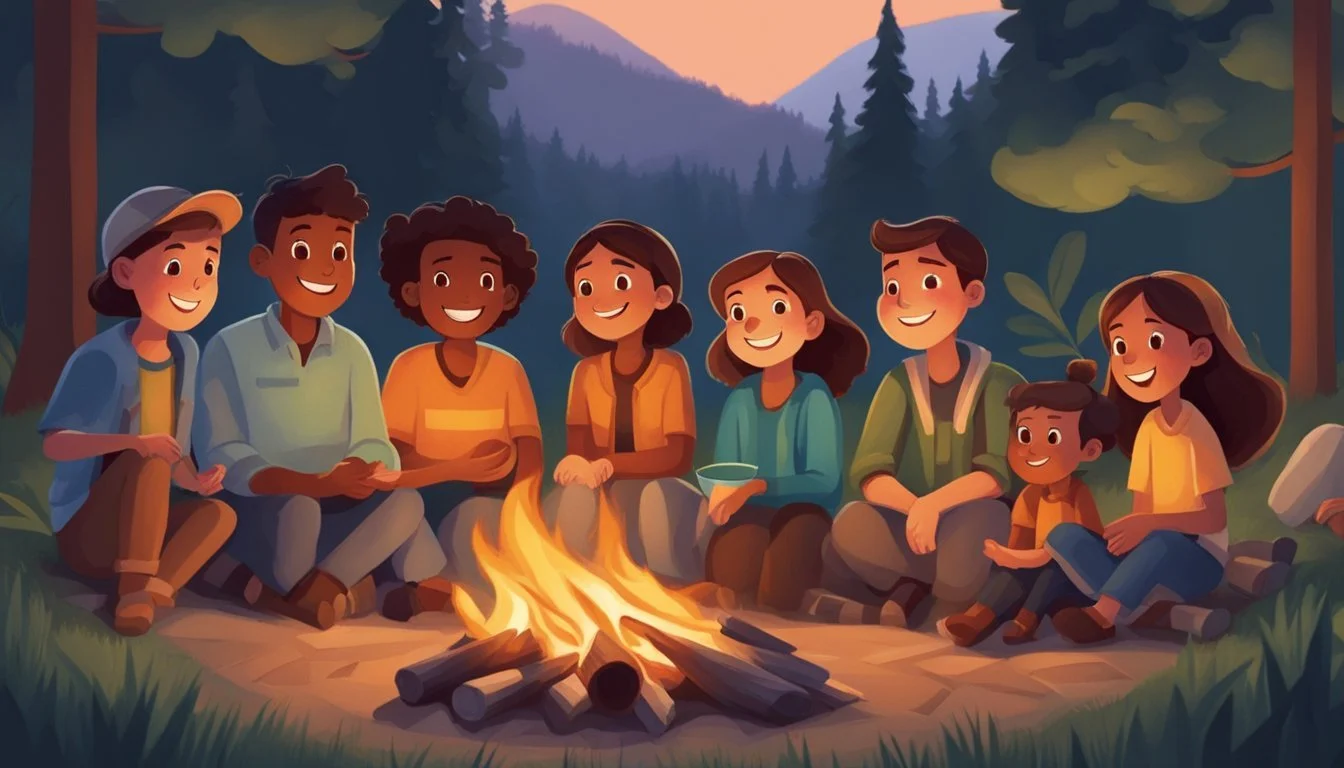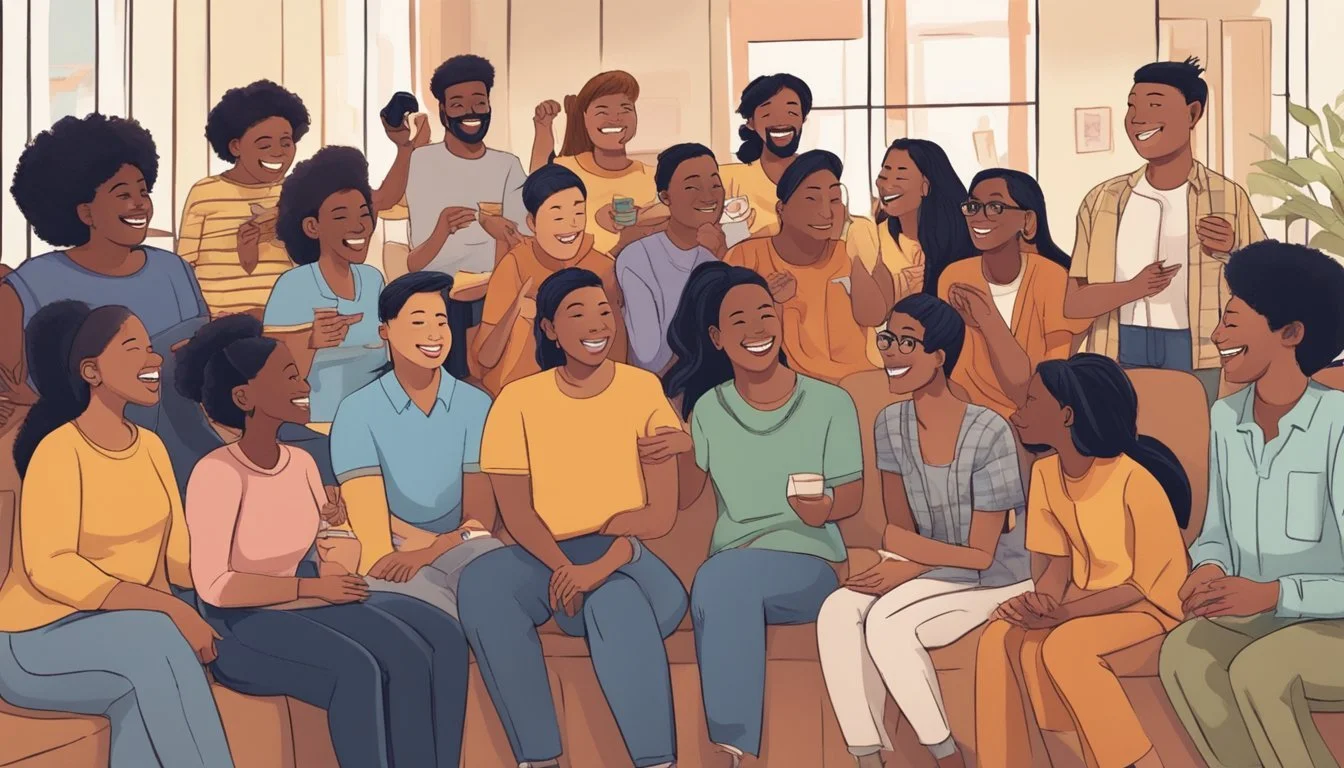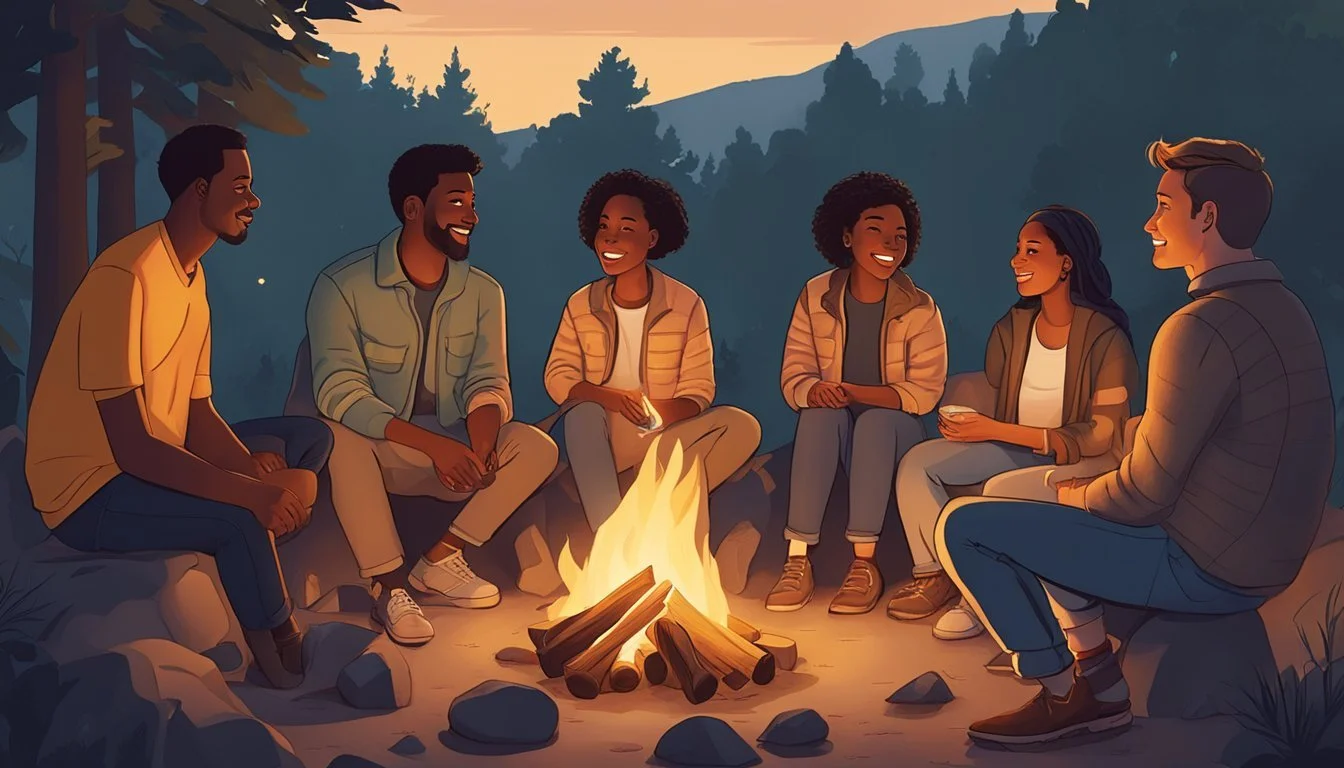Swicy Stories
Personal Anecdotes and Cultural Narratives - Unveiling Diverse Experiences
Personal anecdotes and cultural narratives have long held a special place in the collective human experience. They open a window into the intimate and varied experiences that contribute to the rich tapestry of life. These stories, brimming with personal insights and shared lessons, often hold universal truths and reflect the diversity of human thought and emotion. From a simple recounting of a day's events to a profound revelation borne from a life-changing moment, personal anecdotes allow individuals to connect with others on a deeply emotional level.
Cultural narratives, on the other hand, encompass the broader collective stories that shape societal values, beliefs, and traditions. These stories are cultural cornerstones that define and reflect the identity of a group of people. Over time, they are woven into the fabric of society, influencing how communities perceive their place in the world and how they relate to one another. Through folklore, historical accounts, and shared experiences, narratives play a pivotal role in the continuation and evolution of culture, offering insights into the zeitgeist of a particular era and providing context for the narratives of the present and future.
The Essence of Storytelling
Storytelling is a potent vehicle for conveying knowledge and shaping cultural understanding. This section dissects its basic elements, its evolution through various cultures, and its adaptation to modern contexts.
Understanding the Basics
Storytelling serves the fundamental purpose of transferring information and knowledge through narrative. At its core, it involves a storyteller conveying a series of events to an audience, utilizing characters and situations that either reflect reality or imagined worlds. Central to storytelling is the power to connect individuals, wherein the storyteller presents a topic that resonates with listeners' experiences or piques their interest.
Components: Sets the scene, introduces characters, outlines a plot, presents a conflict, and provides a resolution.
Functions: Educates, entertains, preserves culture, and instills moral values.
Evolution of Narratives
The art of storytelling has undergone significant evolution. Ancient storytellers would relay oral histories and myths that formed the backbone of communal knowledge and identity. Over time, these narratives have been codified into written forms, transitioning from spoken word to literature, allowing stories to traverse geographical and temporal boundaries. Cultural evolution also influences the shape of narratives, as each society imbibes and tells stories in a manner that reflects its collective ethos and values.
Oral Tradition: Once the primary method of storytelling, particularly in pre-literate societies.
Literary Development: The advent of writing systems and print technology revolutionized the preservation and dissemination of stories.
Storytelling in Modern Times
In modern times, storytelling extends well beyond oral and written traditions into multimedia and digital realms, which has transformed the way information is delivered and experienced. The integration of visual and auditory elements in storytelling, through film, television, and the internet, offers a more immersive experience and widens the reach of narrative influence. Despite changes in medium, the core objectives remain: to share knowledge, engage audiences on a significant topic, and reflect the culture from which they originate.
Media Convergence: The blending of traditional storytelling forms with digital technology.
Global Reach: Stories can now travel instantaneously across the world, allowing for a cross-pollination of cultural narratives.
Personal Anecdotes in Society
Personal anecdotes serve as a medium for individuals to express their identities and to impart values to others. They enrich educational resources and offer inspirational insights through lived experiences.
Conveying Identity and Values
Personal narratives are more than stories; they are a reflection of an individual's identity and the values they hold dear. Society often uses anecdotes to communicate cultural values and traditions, creating a tapestry of shared understanding. Personal anecdotes act as vessels through which unique perspectives are told and communal norms are broadcasted.
Influence on Society: Through sharing anecdotes, individuals contribute to a collective narrative that shapes societal norms and values.
Expression of Self: When people tell their own stories, they express their identities and solidify their role within the community they inhabit.
Anecdotes and Education
Within the educational sphere, anecdotes are a powerful pedagogical tool. They transform abstract concepts into tangible lessons that resonate with students. Educators often incorporate inspirational anecdotes into their teaching methods to bridge the gap between theoretical knowledge and practical wisdom.
Real-world Relevance: Anecdotes add real-life context to textbook content, making lessons memorable and applicable.
Inspiration & Engagement: They can inspire students, providing clear examples of the application of values and principles in decision-making.
Inspiration Through Experience
Inspirational anecdotes stir the spirit and motivate societal members to action. These stories are grounded in personal experience, demonstrating the art of overcoming adversity or achieving significant accomplishments. They are not just tales; they are lived experiences that offer encouragement and impart wisdom to others.
Catalysts for Change: Inspirational stories can act as catalysts, provoking individuals to consider new perspectives and take action.
Sharing Wisdom: By contributing personal anecdotes to the societal discourse, individuals pass on valuable lessons learned from experience.
The Cultural Impact of Narratives
Narratives have a profound impact on cultural practices and understanding, often reflecting and shaping traditions, beliefs, and societal norms through various mediums.
Traditions and Beliefs
Narratives serve as a vessel for cultural heritage, carrying traditions and beliefs across generations. They embody cultural practices, giving life to rituals and customs through stories that offer insights into the values of a community.
Example of tradition narrative: The recounting of folktales during festive gatherings.
Example of belief narrative: Parables that convey moral lessons and societal values.
Media and Technology Influence
With advancements in media and technology, the dissemination of narratives has expanded, greatly influencing cultural narratives. Stories travel faster and reach wider audiences, affecting cultural understanding on a global scale.
Presence in Digital Media:
Blogs and articles that explore cultural topics and stories.
Social media platforms showcasing personal anecdotes with cultural relevance.
Technological Channels:
Streaming services offering international films and documentaries.
Podcasts discussing cultural phenomena and narrative impact.
Diversity and Inclusion in Stories
Inclusion in storytelling means bringing a wide range of experiences to the forefront, which in turn fosters diversity within cultural narratives. By highlighting different voices, narratives become richer and more representative of various perspectives within culture.
Bold Representation: Stories that spotlight marginalized groups contributing to a more inclusive cultural dialogue.
Inclusivity in Practice:
Literature and films featuring characters from diverse backgrounds.
Education curricula incorporating stories from multiple cultures to broaden students' perspectives.
Building Connections with Audiences
Building connections with audiences is about fostering relationships and community through storytelling. Successful narratives hinge on empathy and effective communication, allowing audiences to see their reflections in the stories presented.
Empathy and Emotional Resonance
Empathy is the cornerstone of building a connection with an audience. When a storyteller exhibits compassion and understanding, they create a space for emotional resonance. This emotional connection is powerful, as it allows listeners to empathize with characters and internalize messages on a deeper level.
Relatability: Stories should include experiences that audiences can relate to, which may involve common challenges or milestones.
Vulnerability: Sharing personal anecdotes that display genuine emotions can deepen the trust and bond between the storyteller and the audience.
Communication and Community
Effective communication extends beyond language; it's about creating a sense of community where there is a mutual exchange of ideas and emotions. Strategic storytelling can unite people, forming connections that transcend individual experiences.
Active Listening: Storytellers should practice active listening to tune into the audience's responses, adapting their narrative to meet the audience's needs.
Engagement: Directly addressing the audience, using eye contact, and incorporating feedback makes listeners feel acknowledged and included.
By weaving empathy into the narrative and engaging communication skills, stories have the power to create a shared sense of experience and trust, thereby fostering strong relationships and a tight-knit community.
Crafting a Compelling Narrative
In crafting a compelling narrative, the successful interplay between character evolution, insightful language use, and structured storytelling is essential. Mastery in these areas elevates a simple tale into an immersive experience for the reader.
Character Development
Character development is the cornerstone of engaging narratives. Effective storytelling hinges on characters who showcase a mix of complexity and growth throughout the narrative. Illustrate characters with specific traits, ambitions, and fears to craft a three-dimensional portrait. Dynamic characters often reflect real-life struggles and triumphs, which resonate deeply with readers. It's through detailed backstories and relevant motivations that characters come alive, engaging the audience's imagination and empathy.
Creative Use of Language
The creative use of language transcends simple vocabulary. It's about harnessing the inherent power of words to evoke a vivid sensory experience. Include humor and playful language to connect with the reader, breaking any language barriers that might exist. A tactile use of metaphor and simile can paint pictures more effectively than a mere description. Utilize an authentic voice, unique to the characters, lending authenticity and depth to the narrative.
Structure and Depth of Story
Depth of story is achieved through a well-crafted structure, typically encompassing a clear beginning, middle, and end. This structure should not be rigid but instead should serve as a framework to guide the unfolding of events and character arcs.
Story Phase Purpose Beginning Introduce characters, settings, and the initial conflict. Middle Develop the plot through challenges and character growth. End Resolve conflicts and provide closure to the character's journey.
Effective use of flashbacks and foreshadowing can enrich the storytelling, creating a tapestry that interweaves various elements of the narrative to deepen the impact and creativity showcased in the writing.
Digital Storytelling and Outreach
Digital storytelling has revolutionized the way organizations connect with audiences, leveraging technology and media to craft compelling narratives for marketing, cultural exchange, and education.
Narratives in Marketing and Branding
In the realm of marketing, digital storytelling becomes an essential instrument for brands to forge a deep connection with their customers. Short, powerful stories that utilize a blend of media, including films and other visual content, help convey a brand’s identity and values. To illustrate, a film that weaves a brand's heritage with customer testimonials will resonate more deeply than traditional advertising.
Leveraging Digital Platforms
Technology has equipped marketers with a plethora of digital platforms to tell their stories. From social media to dedicated apps, companies use interactive elements and multimedia to make stories more engaging. As a result, diverse voices find a place in the spotlight, with even marginalized communities being able to share their anecdotes. This inclusivity not only enriches the marketing landscape but also ensures a wider variety of narratives reach a broader audience.
Reaching a Global Audience
Digital storytelling transcends borders, offering the potential to reach an international audience at scale. This is particularly significant for educational institutions that aim to attract and engage international students. By sharing successful stories of current international students or alumni, educational entities provide real-life examples of diversity and opportunity that can encourage prospective students to enroll. Localized content, possibly through translated versions or region-specific anecdotes, maximizes outreach and relatability among different cultures and demographics.
Analyzing and Learning from Stories
Analyzing and learning from stories provides insight into various perspectives, promotes critical thinking, and enhances education. It draws on literature and personal experiences, offering learners a grounding in both the theoretical and the practical aspects of stories.
Critical Perspectives on Literature
In literature, stories are examined not just for their narrative content but for the underlying social, cultural, and psychological dynamics. Critical analysis of literature involves dissecting plot structures, character developments, and thematic elements to understand a writer's perspective or societal commentary. Such scrutiny is essential for learners to appreciate literary nuance and develop their own interpretative skills.
Narrative Structure: Includes an examination of plot, setting, and climax.
Character Analysis: Focuses on the complexities of protagonists and antagonists.
Thematic Interpretation: Explores the moral and cultural values conveyed.
Lessons from Personal Experiences
Personal stories, often conveyed through anecdotes, act as powerful educational tools. They can elicit empathy and foster a connection between the storyteller and the listener, encouraging a deeper level of engagement. Anecdotal evidence, while not scientifically rigorous, can be valuable in highlighting individual perspectives and fostering a collective sense of understanding.
Empathy: Gained through sharing and receiving personal narratives.
Engagement: Heightened when learners relate to the experiences being shared.
Perspective: Broadened through exposure to diverse personal stories.
The Role of Stories in Education
Stories play a pivotal role in education by abstracting complex principles into relatable scenarios. Educators often use narrative techniques to clarify abstract concepts and make the learning process more engaging. The incorporation of both high-level structures of short stories and personal anecdotes in educational materials can significantly enhance the learning experience.
Knowledge Conveyance: Simplifies the communication of complex ideas.
Moral Lessons: Illustrated through both historical and personal narratives.
Cultural Values: Preserved and disseminated through storytelling.
Through the analysis of literature and personal anecdotes, learners gain critical thinking skills, deeper cultural understanding, and an appreciation for the varied perspectives that make up our world.
Challenging Perspectives Through Anecdotes
Anecdotes serve as powerful instruments for challenging established perceptions, showcasing the transformative power of resilience and agency in personal and cultural narratives.
Stories of Resilience and Empowerment
Personal stories often highlight individual resilience—the capacity to recover from life's challenges. For instance, anecdotes from immigrants portray the struggles and triumphs of adjusting to new cultures, underscoring the agency individuals possess to craft their destinies in unfamiliar settings. Such narratives illuminate the strength and empowerment that come from overcoming adversity, offering diverse perspectives that can reshape how one views migration and its impact on society.
Table: Instances of Resilience in Personal Anecdotes
Anecdote Theme Key Elements of Resilience Impact on Perception Immigration Adaptation, perseverance, cultural integration Broadens understanding of immigration challenges and triumphs Overcoming Odds Determination, self-efficacy, resourcefulness Inspires and motivates others facing similar struggles Personal Growth Self-discovery, empowerment, learning from failure Encourages a realistic appraisal of personal growth potential
Cultural Narratives and Social Change
Cultural narratives steeped in realism provide a lens through which societal norms can be examined and critiqued. Stories reflecting social issues, such as empowerment through collective action, demonstrate how shared experiences can mobilize communities for social change. By presenting diverse perspectives, these narratives challenge existing societal conventions and perceptions, encouraging readers to reconsider their views on cultural dynamics.
Examples of Change-Driven Cultural Narratives:
Folklore: Utilized as a vehicle for tradition, it also sparks discourse on contemporary social contexts.
Literary Works: Fiction and non-fiction grounded in realism often dissect and reflect upon current societal structures, providing a mirror for cultural introspection.
Biographical Accounts: Life stories of influential figures promoting equality and justice underline the power of a single voice to echo through generations, prompting shifts in the collective consciousness.
Conclusion
In synthesizing the insights from personal anecdotes and cultural narratives, it is evident that storytelling is a potent vehicle for shared human experience. Stories serve not only as a means of entertainment but as a bridge between diverse cultural backgrounds, enriching the global fabric of understanding.
The body of work surrounding international students' essays illuminates the multifaceted nature of intercultural encounters and their profound impact on identity formation. Key themes, such as acceptance and adaptation, are recurrent and resonate across geographic and demographic lines.
Ta-Nehisi Coates's memoir underscores the narrative's power to delve into societal issues and personal identity. Such narratives are invaluable, illustrating how personal experience shapes broader discussions on race and community dynamics.
Research papers that interweave personal narratives highlight narrative's role in enhancing intellectual discourse. By personalizing their accounts, authors foster a connection with the reader, illustrating abstract concepts through tangible experiences.
In conclusion, the fusion of personal anecdotes with cultural narratives constitutes a rich tapestry, each thread contributing to a more nuanced comprehension of the human condition. Personal stories are not merely recollections but lenses offering clarity to the complexities of societal narratives. This intersection is where the personal becomes universal, contributing to a greater collective understanding.











